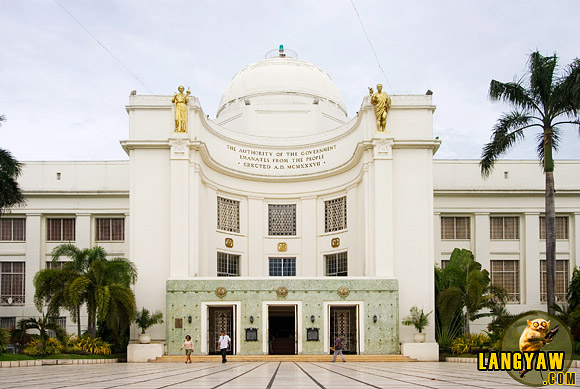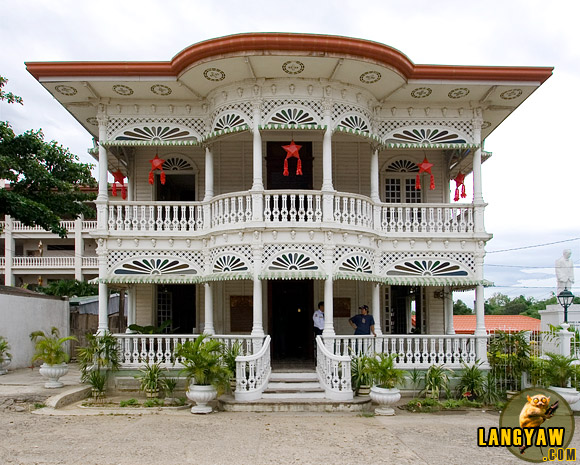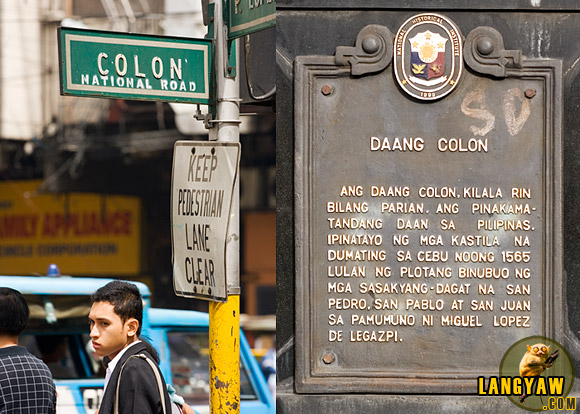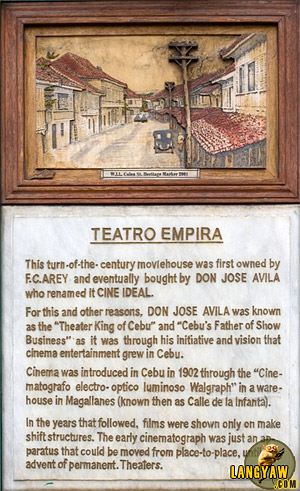
Speak of Cebu and images of the Sto. Nino , the province‘s patron, come to mind. And so does the valiant Lapulapu, sweet mangoes, the famous lechon, guitars and beaches. But it is more than that. Cebu is a special and beautiful place. It is also my home.
I am featuring travel and, especially local bloggers who embody a particular place, as well as other personalities from time to time. For this Cebu-Sugbo Kini series, I’m featuring Arnold Carl Sancover.
As a continuation to Arnold Carl’s interview in the previous post, I asked him his top 5 non-religious Cebu heritage sites. Below are his recommendations.
1 Cebu Capitol Building
The Cebu Capitol Building is a beautiful neoclassical American colonial period edifice that was started in 1937. It is the seat of the Cebu provincial government and is found at the end of Osmeña Boulevard (but still popularly known as Jones Ave.). This was designed by Juan Arellano, who also did the Manila Metropolitan Theater, the Executive House (now the National Museum) as well as Jone’s Bridge.
The capitol was originally built within the perimeter of the Plaza Independencia, near Fort San Pedro, which follows the traditional Spanish plaza setting.

2 The Heritage town of Carcar
About 46 kilometers south of Cebu City, the town of Carcar is one of the impressive towns of the island province which retained its heritage structures attesting to its rich culture and history spanning from the Spanish colonial period marked with the beautiful 19th century neoclassic church and convent, some ruins of watchtowers along its coast as well as houses; to the American period marked with houses of antillan style architecture including the Carcar Dispensary shown above and the rotunda with its quaint gazebo. A hike along it’s streets is a must to see these heritage treasures.
The town is also known as the shoe capital of the province, an important economic and transit hub. For food fanatics, it is known for its sweet delicacies and pasalubongs.

3 The Jesuit House of 1730
Tucked in within the compound of a hardware in the old Parian district is the Jesuit House of 1730. It is the oldest dated house in the country today. Bas reliefs as well as carved medallions decorate its perimeter walls as well as interior including the date 1730. It’s an all stone house with tejado (tiled) roofing
Owned and built by the Jesuits, it was confiscated by the then Spanish colonial government when the religious order was expelled in all Spanish dominions. Over the years, it passed through various families and at one time, was even a night club. The current owner plans to open this site to the public after renovations and clearing of the hardware.

4 Historic Colon Street

The oldest street in the Philippines is found in Cebu and it is Colon Street. Started and based on the town plan of Miguel Lopez de Legazpi who arrived in 1565 it is named after Cristobal Colon, better known as Christopher Columbus.
It was the main street, economic and enterainment hub in Cebu. There were many movie houses, restaurants and businesses built. At it’s end is the Parian district where many rich Chinese-Filipinos were located.
In the 20th century and well up to the 1990’s, it was a popular spot for Cebuanos with popular department stores Fairmart, Gaw, Gaisano and Gazini Plaza During weekends, people used to flock to the many theaters here as well as dine at popular restaurants.
With the advent of malling in the 90s, wherein several huge malls were built in other sites in Cebu City, the Colon strip has descended into a shabby, crowded quarter. Gone are the once known malls to be replaced with parking lots or those cheap chinese product store outlets. Theaters have been closed while those that remained have been showing sex themed films. One historic and beautiful theater, Vision, is now a haven for bootleg sellers.
While the current state of Colon Street is not too pretty, walking and reading the different heritage markers along both sides is a wonderful experience to familiarize oneself with its past glory.

5 Old cemetery of Cebu’s rich families in Carreta

The cemetery at M.J. Cuenco, just near the present Carreta cemetery is one of the forgotten heritage sites in the province. This is where some of the mortal remains of Cebu’s rich were interred including the Osmena’s, Sottos, Suico’s and Veloso’s.
There are ornate marble tombs, statues made by italian sculptors and even remnants of a Spanish colonial period niche lining one corner of the cemetery. Unfortunately, the area has been overun with squatters and has fallen into neglect as some families decided to transfer to other sites.





i like the carcar dispensary. the details are just so ornate!
grabe–dami ko palang namiss nong pumunta ako ng Cebu—gusto kong makita yang Osmena Mausoleum na yan~~~~
pusang kalye, you should visit these when you have the chance to come back. these are out of the usual tourist spots
reena, maganda nga talaga ung antillan architecture houses and structures sa carcar.
Very informative post. Maybe someday I might visit one of these places in Cebu. I’m interested in the Jesuit house which look very old but still standing there. BTW congrats for winning in the Blog Awards!
thanx lito
Nice list.
Interesting list. All sound like places I’d love to visit, although I think the decline of Colon Street would make me sad (but it’d still be fascinating to see).
Julie, yeah, Colon has declined but its place in history is important. All we have to know about this once beautiful street are in the markers along each side and some structures like Vision Theatre.